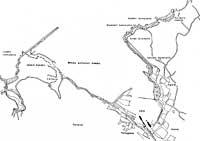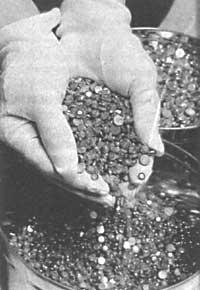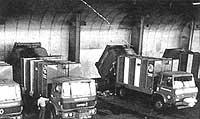Waste recycling in Bilbao
1986/12/01 Irazabalbeitia, Inaki - kimikaria eta zientzia-dibulgatzaileaElhuyar Fundazioa Iturria: Elhuyar aldizkaria
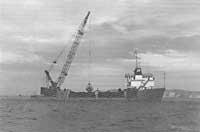
When we approached Bilbao to interview the leaders of the company Vastur, S.A., we thought of a cloudy news read in the press: it seemed that at the mouth of the port of Bilbao, the metal waste of the ovens deposited for years were accumulated at the bottom of the sea and had a value of one hundred billion. The senior managers of Vastur, S.A. put things in place and gave us a lot of information.
The sea as a landfill
When making steel in the furnaces, there is usually a large amount of rubbish attached to the walls of the furnaces. These residues must be removed from the furnace so that the steel manufacturing process advances properly. In some cases these rubbish are often strongly attached to the walls, so they must be dynamited.
It was formerly declared useless and deposited in landfill. Those of the ovens of Bizkaia decided to throw them into the sea and so, for about 80 years, until 1969, the rubbish of the blast furnaces accumulated at the bottom of the sea in an area between the ends of Galea and Aizkorri. Since 1969 the recycling of these rubbish has been profitable and is being worked on. However, hundreds of thousands of tons of metal trash have accumulated on the Biscayan coast until that year.
Waste recovery
At a time of scarcity and high demand for raw materials, some Biscayans saw that the recycling of all this mineral poured into the sea could prove economically profitable outside their ecological interest. However, some points had to be clarified before starting work. How many minerals are there? At what depth? What wealth did they have? It was necessary to know the answer to such questions.
Garbage studies began in 1985. To this end, the Vastur began to collect samples by a small boat. Two lentadores began to manually extract the material called "Cakes". The collected material was analyzed. A total of 250 tons were extracted from the seabed. The chemical analyses performed indicated that the material was of very good quality and that it was something better than primary scrap.
Geophysical study
After this first session and knowing that the material stored on the seabed was of good quality, a geophysical study of the area was carried out. This study had two objectives. On the one hand, it was about knowing the exact place where the waste was deposited, and on the other, the thickness of the waste layer.
Special techniques such as albo-sonar, echo sounder, unibooma and Trispander were used. The garbage collection area is located between the Galea and Aizkorri hair and in a rectangle that runs 1 mile from the coast. The total area area is about 800,000 m 2. The thickness of the waste in the 300,000 m 2 is three or four meters and in the remaining 500.000m 2 the thickness is between half a meter and a meter. This was the second step in the process.
This year's work
The Vastur have begun to take the third step of the process in September this year. The aim of this third step is to discover the real wealth of the landfill and its use for exploitation. If the response were positive, the landfill would begin to explode next year.
To carry out the sampling they have hired a specialized vessel called "Jan Steen", which is in the image. It is a large boat of 76 m in length and 19 m in width, with a load capacity of 2000 tons. It has 8 anchors of 800 m. Thanks to these anchors this boat can work very close to the coast in a sea as intense as that of Bizkaia. In addition, the boat has on the bridge a crane capable of lifting 25 tons at a distance of 25 meters. This crane uses four "octopuses" in different ways, since in addition to knowing the degree of wealth of the garbage, they want to analyze the most suitable extraction system.
Not knowing at first the state of the garbage, the license of dynamization (which could be petrified) was requested. However, they have not had to use it. In this sampling that will have to be carried out this year, made in 32 different points, 5000 tons must be extracted to know the real wealth of the garbage.
Cannot work all year round
The exploitation of this type of landfill raises the problem of the state of the sea, especially in the living sea of Bizkaia. According to statistics from the Port of Bilbao, the ship "Jan Steen" can operate at 90% between May and October. The remaining months the number of working days is reduced to 30-40%. Therefore, if you want to take advantage of the landfill and the boat, you must work on those days near the summer.
Lots of accumulated garbage
According to estimates made, especially using the data of years in which they have been discharged, it is estimated that between 4,000,000 and 5,000,000 tons exist in the subsoil.
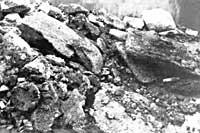
As for the quality of the garbage, and analyzing the 2,000 tons extracted, very positive results have been obtained. The iron wealth of garbage ranges from 50-65%. If this latest data is confirmed, Vastur's officials are very optimistic about the future of corruption. It would take large investments (around 600 million pesetas) to start working on the corruption process next year.
On the other hand, the waste recovered from the sea would be transferred to a dock in the port of Bilbao where iron would be recovered by a mill and magnetic distributors. Subsequently, iron would be sold to companies operating in foundry as primary scrap.
Finally, it should be noted that the development of such recycling plans elsewhere in Europe is not known to Vastur's managers. Therefore, Euskal Herria can finally be a pioneer in an industrial process.

Gai honi buruzko eduki gehiago
Elhuyarrek garatutako teknologia



